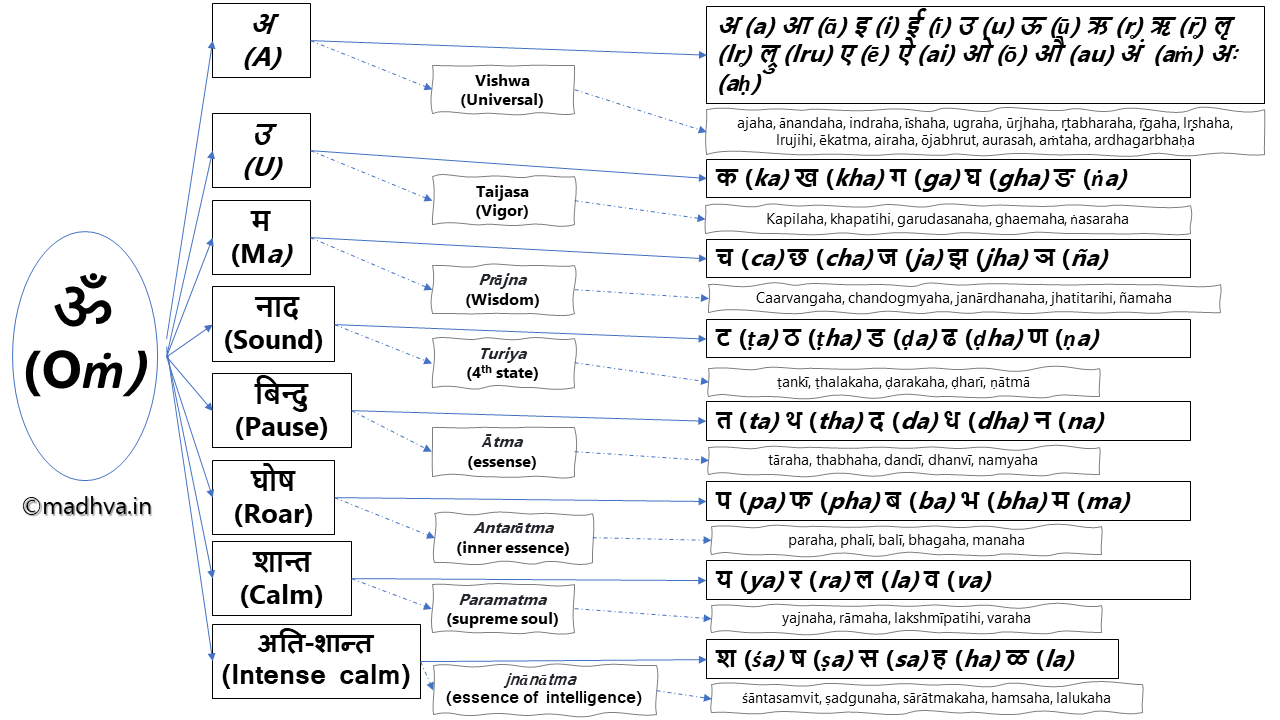Tantra Sāra 1.006
द्विरष्टपञ्चकचतुःपञ्चेत्येवाष्टवर्गगाः। अज आनन्द इन्द्रेशावुग्र ऊर्ज ऋतम्बरः ॥६॥
dviraṣṭapañcakacatuḥpañcētyēvāṣṭavargagāḥ। aja ānanda indrēśāvugra ūrja r̥tambaraḥ ॥6॥
[dviraṣṭapañcakacatuḥpañcētyēvāṣṭavargagāḥ = 2X8 = 16 are the ovals, 'Ka' to 'Pa', 5 groups of 5 letters each, non-grouped letters from 'Ya' to 'Va' four letters are grouped together, 'Sha' to 'La' - five letters are grouped together, thus are formed eight groups, with each letter conveying the specific form of God; । aja = 'A' for Aja; ānanda = "Ā" for Ānanda; indrēśāvugra = I for Indra, Ī for Īsha, U for Ugra; ūrja = Ū for Ūrja; r̥tambaraḥ = 'r̥' for Rutambara;]
The eight groups of letters originating from the eight sounds of Pranava are: (1)Sixteen ovals, 'Ka' to 'Pa', 5 groups of 5 letters each non-ovals(2,3,4,5,6), (7)non-grouped four non-ovals from 'Ya' to 'Va', (8) 'Sha' to 'La' - five letters are grouped together. Each letter conveys the specific form of God as follows: 'A' for Ajaha, 'Ā' for Ānandaha, 'I' for Indraha, 'Ī' for Īshaha, 'U' for Ugraha, 'Ū' for Ūrjaha, and 'r̥' for Rutambaraha;
Note:
Ajaha = One without birth; Ānandaha = One who is of the form of bliss; Indraha = The capable; Īshaha = the owner; Ugraha = the ferrocious; Ūrjaha = one who is full of streangth and action; Rutambaraha = One who is wearing the world, of the form of truth;
A pictorial reprasentation of how everything is derived from the Pranava, 'Om':

